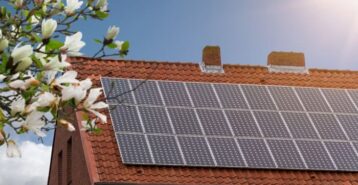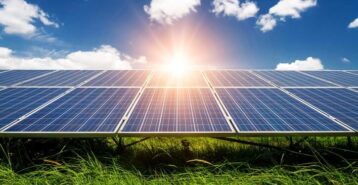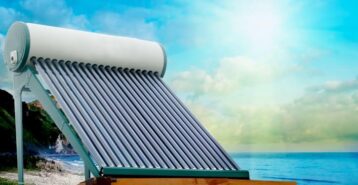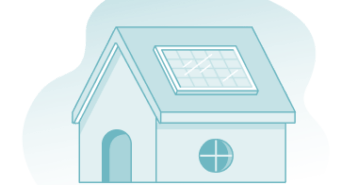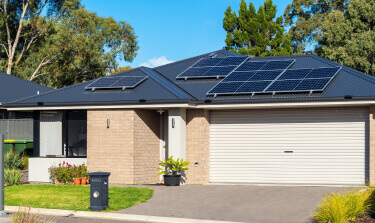A Step-by-Step Guide to Solar Panels: How They Work
Solar panels have become a popular option for homeowners looking to lower their energy bills, reduce their carbon footprint, and take control of their energy use. With tax credits, rebates, and declining equipment costs, solar power is more accessible than ever. But before making the switch, many homeowners ask the same question: how do solar panels work? Understanding the basics can help you decide if solar is the right fit for your home.
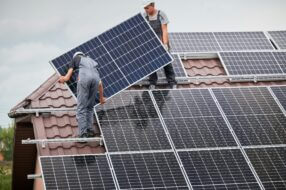
Step 1: Sunlight Hits the Solar Panels
When you install solar panels, your home begins capturing sunlight and converting it into electricity. Each panel contains smaller units called photovoltaic (PV) cells, which absorb sunlight and initiate the energy conversion process.
Unlike traditional electricity production, which depends on extracting and burning fuels like coal, natural gas, or uranium, solar energy uses sunlight, a clean, renewable, and abundant resource. It’s a safer, more sustainable way to power your home without the environmental impact of fossil fuels.
Step 2: Solar Cells Generate Direct Current (DC) Electricity
Each solar cell contains a semiconductor material, usually silicon, that reacts to sunlight. When sunlight hits the surface of the cell, it energizes the electrons in the silicon, causing them to move and create an electric current.
This movement generates DC electricity. The more sunlight your panels receive, the more electricity they can produce. This process is what makes solar energy production both clean and efficient.
You might also hear solar systems referred to as “photovoltaic” or “PV” systems. The term combines “photo,” meaning light (from photons, the particles in sunlight), and “voltaic,” which refers to electricity. While other types of solar technology exist — like solar thermal and concentrated solar power — PV systems are by far the most common for residential rooftops in the U.S. They’re efficient, scalable, and well-suited for powering everything from small homes to large households.
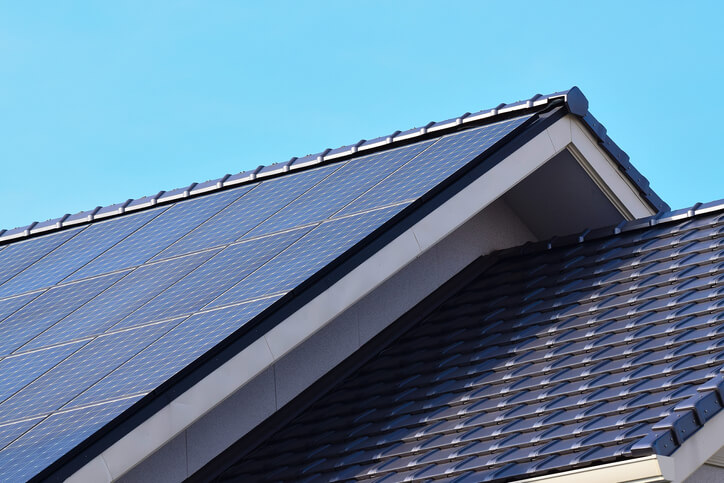
Step 3: The Inverter Converts DC to Alternating Current (AC) Electricity
Your solar panels produce DC energy, but your home and most of your appliances use alternating current (AC). That’s why your solar setup includes an inverter, a key component that converts DC electricity into AC power, so it’s ready to run everything from your lights to your air conditioner.
Residential solar systems can use a few different types of inverters. The most common is a string inverter, which connects all your panels to a single device. Some systems use microinverters, which are installed on each panel, or power optimizers that improve performance when some panels are shaded. No matter which type you choose, the inverter plays a crucial role in making your solar power usable inside your home.
Step 4: Electricity Flows Through Your Home
Once the solar inverter converts DC power to AC, that electricity flows into your home’s electrical panel. This is the same panel that manages power from the utility grid. From there, solar energy powers your lights, appliances, HVAC system, and anything else that runs on electricity.
If your solar system generates enough electricity to cover your home’s energy use, you can rely entirely on solar power during the day. If your energy demand exceeds what your system produces, your home automatically pulls the extra power from the grid. The transition happens in real time, and most homeowners don’t notice a thing.
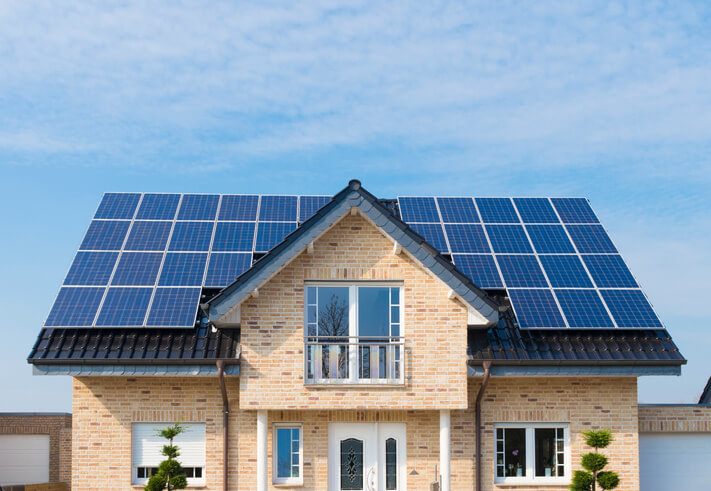
Step 5: Excess Energy Is Stored or Sent to the Grid
Sometimes your solar panels produce more electricity than your home needs, especially during peak sunlight hours. That extra energy doesn’t go to waste. If your system includes a battery, it stores the excess electricity for later use, such as at night or during a power outage.
If you don’t have battery storage, the surplus energy flows back to the utility grid. This process is known as net metering. In many areas, your utility company gives you credit for the energy you send back. These credits can help offset your electricity use during low-sunlight periods, which can further reduce your utility bill.
Solar Panels and Your Utility Meter
Your utility meter plays a key role in how your solar panel system interacts with the power grid. Once your solar panels are up and running, the meter tracks how much electricity your system produces and how much you use from the grid. The more solar power your panels generate, the less electricity you need to buy from your utility provider, which means lower monthly utility bills.
In many areas, solar systems are set up with net metering, a billing arrangement that credits you for any excess electricity your system sends back to the grid. During sunny days, your system might produce more energy than your home uses. Your meter will track that extra power and roll it forward as a credit, helping offset your energy costs during cloudy days or at night when your panels aren’t producing.
Over time, these savings can add up significantly, reducing or even eliminating your electric bill, depending on your system size and energy usage. Net metering policies vary by state and utility company, so it’s a good idea to check what’s available in your area.
Solar & Your Next Steps
Switching to solar is more than just a smart investment. It’s a step toward long-term energy savings and greater independence from rising utility costs. By understanding how solar panels work, from capturing sunlight to powering your home and feeding extra energy back into the grid, you can make a more informed decision about whether solar is right for you. With the right setup, your home can run efficiently, cleanly, and affordably for years to come. So, what should you do next? Check out this page to see prices from the top solar panel installers, or tap the button below to see installers near you.
Compare top-rated solar pros in your area.
Read real homeowner reviews, explore qualifications, and view promotions. Modernize makes it easy to browse professionals and find one that will be perfect for your project.





